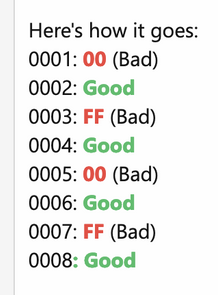Reply 40 of 47, by Jo22
- Rank
- l33t++
BitWrangler wrote on 2023-02-10, 05:01:Yeah, the point being that it was the BIOS that made it compatible, remapping all hardware to a common interface, so if it doesn't quite mesh with what is on the board, problems will ensue... Particularly if the BIOS was intended for a 188 or V40 chip with internal peripherals like timer etc which needed to be "broke out" to normal addresses for PC.
Yes, I think that was the original idea of the BIOS.
CP/M did have a BIOS for the same purpose, as some HAL/HEL component.
In a perfect world, the relationship would be Hardware <-> BIOS <-> DOS <-> Application.
Unfortunately, developers/programmers in the mid-80s started to directly access hardware more and more.
To improve performance or due to the lack APIs (BIOS merely guaranteed CGA graphics).
That's what put and end to the market of MS-DOS compatibles.
Nowadays, merely fans of computing history remember those compatibles.
The news articles of the popular press do always simplify history.
It goes like this (example of simplification):
First there was darkness. Then Apple made Apple I in the late 70s, a wonderful machine no one realized its potential.
Then the Apple II came out, people danced on street in pure joy.
In 1980, IBM invented the Personal Computer, Bill gates wrote DOS for it.
Apple made Macintosh, but no one could afford it because Steve didn't want it to be cheap. And it had no color, because Steve was an eccentric.
Windows came out in the mid-80s and had color and instantly became a huge success.
In 1990, the internet was made. The age of light had begun.
It made funny noise and people couldn't phone while being online.
The the world got Tweater and F-book, the iPhone was invented soon after. Now.
^That's utter nonsense, of course. 😅
But it gives an idea how computer history is sometimes being presented in a small news segment in TV or in cheap news papers.
In the 90s, Apple was being left out of such stories, interestingly.
It wasn't until the iPod/iPhone era, when Apple got fancy in the eyes of the public, that history was modified to include Apple's contributions (no fake, but merely a foot note previously).
"Time, it seems, doesn't flow. For some it's fast, for some it's slow.
In what to one race is no time at all, another race can rise and fall..." - The Minstrel
//My video channel//
